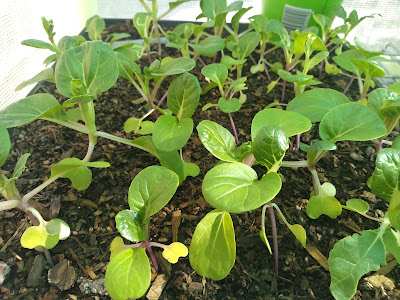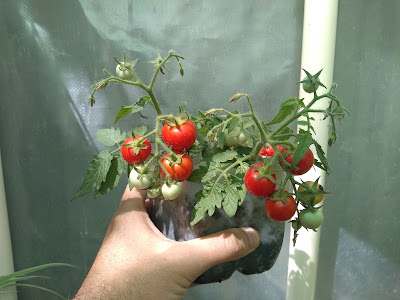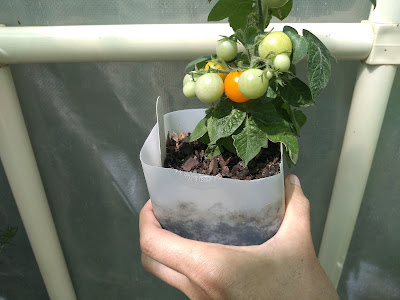I wrote an earlier post after five months of using the lucky iron fish. At that stage I had used it almost every night for about five months, and it was working great. The Lucky Iron Fish is meant to last for over five years if used every day, apparently once its smile disappears it is time to get a new one. Given that these are intended for long terms use, a post saying how it looks after five months is not all that useful.
I have had my Lucky Iron Fish for just under two years now. I have used the lucky iron fish almost every night, so I thought it a good idea to do another post saying how the lucky iron fish performs over this longer time frame.
Each night I use the lucky iron fish to make up some iron enriched water. We drink this water, and it adds iron to our diet. Like any other supplement, it can only be useful if your diet is lacking.
Using this is simple. Each evening when I am clearing up after dinner I put the lucky iron fish in a pot, add 2 liters of boiling water, ass a few drops of lemon juice, then boil for twenty minutes. You could also put it on one liter for ten minutes, or you could put it in with soups or whatever, but we drink the water the following day so two liters works well.
 |
| My Lucky Iron Fish after more than a year and a half of use |
 |
| The same Lucky Iron Fish after only five months |
Once twenty minutes is up I remove the lucky iron fish, dry it with a tea towel, and put it on the shelf until the next evening. As the fish is still really hot, any water not dried off by the tea towel evaporates. I then take the water off the stove and leave it to cool. Once cooled I pour the water in a bottle. It is that simple.
The lucky iron fish needs some acidity for the iron to go into the water, so I put some lemon juice in it. As I put in a squeeze of lemon juice, the water can taste a little like lemon at times if I squeeze in too much. Most of the time the water tastes like water, but it has iron it in.
Twenty minutes of boiling this thing while I am cleaning the kitchen after dinner is no inconvenience. Other people put this in with their cooking, again it takes no real effort. I have a lemon tree, so adding a few drops of lemon juice (it needs acidity to work) is simple for me. Other people put this in with their cooking, if they are cooking with tomatoes there is no need to add more acidity.
The Lucky Iron Fish people also make a cookbook for people who want to use the thing in their cooking. As I use my Lucky Iron Fish for water I have not looked at the cookbook, but I am told it is good.
 |
| Lucky Iron Fish Cookbook |
While it makes no difference, I always put my lucky iron fish with the number side down and the leaf side up, that way I will know if wear and tear is due to it being scratched against the pot. The only reason I do this is because I wanted to see how much wear the ingot gets from use, as the leaf side is always up I know any wear is not from being scratched against the pot. Most people just pop the ingot in and don't care which way is up. It really makes no difference other than to satisfy my curiosity.
After using this Lucky Iron Fish for over a year and a half of nightly use (other than a few nights per year if we are away or something) my lucky iron fish has absolutely no rust, and is still looking good. The side that scrapes against the pot in the photo below does not look very worn yet. As you can see in the photos, mine had a little seam around the nose that is no longer there, other than that it almost looks new.
I have heard of people buying a special oil that they use to clean their lucky iron fish, I have never used anything and mine looks fine. All I ever do is dry the thing after use. I dry it straight away while it is sill hot. I don't wash it or clean it or anything, and mine looks great after more than a year and a half of continuous use.
 |
| Lucky Iron Fish - still looking good |
If your diet is low in iron you could buy iron supplements, or try to eat more red meat, or you could use a lucky iron fish. This is much like any supplement, it only works if you diet is lacking.
The difference with the Lucky Iron Fish is that this is much cheaper than supplements, lasts a long time (more than five years), takes up little room on the shelf, and is much easier on the stomach than most iron pills. Given the materials it is made from, it poses no moral problems for vegetarians, or vegans, and no religious issues for Orthodox or Muslims or Jewish people or any other faith.
Much like myself, my son generally has low iron. He eats a varied diet, but struggles to get enough iron for some reason. Getting a six year old to take an iron pill every day for weeks on end is difficult. Getting him to drink water is easy. Each night I fill his water bottle with iron fish water, and each day he drinks it when he is thirsty, it doesn't get much easier than that.
Another great thing is that percentage of Lucky Iron Fish profits go to humanitarian work in developing nations.
 |
| Lucky iron fish |
There are a few other brands that make similar products, unfortunately I don't know if any of the other types are safe. Lucky Iron fish has been tested, and retested, by many different laboratories, and all confirm that the Lucky Iron Fish is safe and effective.
Other brands have not had such rigorous testing, I don't know where their iron comes from, so I would not risk using one. Not too long ago a shipment of iron was seized at the border. One of the nuclear facilities in China had been decommissioned or was replacing old parts or something, the metal had been sold, and it was hideously radioactive. A lot of radioactive iron from there had made it into our country before this shipment was stopped. While I know that the iron used for Lucky Iron Fish is safe, I can't know about the iron used by other companies.
Lucky Iron Fish comes in two shaped ingots, a fish or a leaf. I like the look of the smiling fish, so that is the one I got. The leaf works exactly the same, but is shaped like a leaf instead of a smiling fish.
 |
| Lucky Iron Leaf |
They used to have an affiliate program where you would get money off the price, but they have discontinued that for now. There is a new affiliate program, if I join it I will post the link here.












































